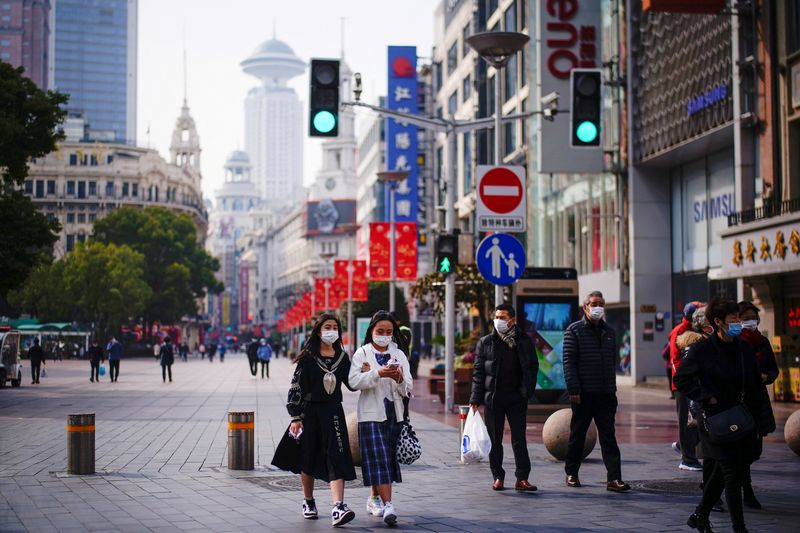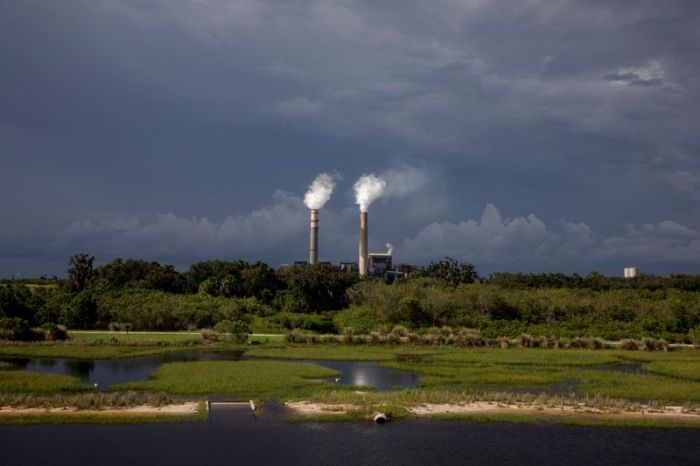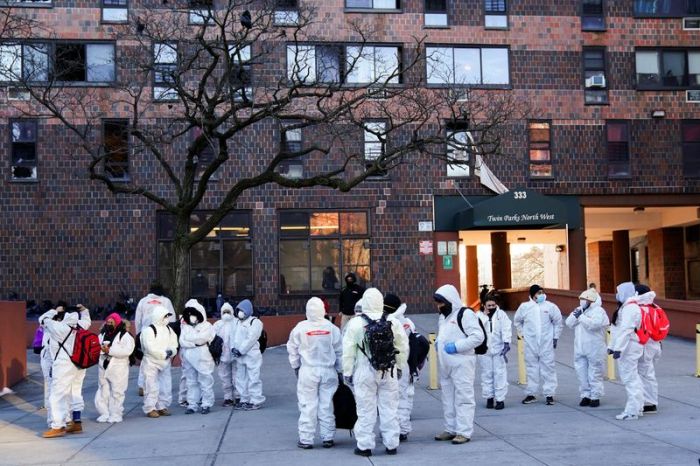BEIJING (Reuters) -Cities across China are imposing tougher restrictions to try to control new outbreaks of COVID-19, with Tianjin battling the highly contagious Omicron variant which has been detected to have been transmitted locally in two other provinces.
A Tianjin official told a Tuesday press briefing that 49 domestically transmitted cases with confirmed symptoms have been detected during the latest outbreak. The city of 14 million people, around 100km (62 miles) from Beijing, is now implementing tough controls to stop the coronavirus from spreading, especially to neighbouring Beijing.
Tianjin, which has tightened controls on people leaving the city, on Tuesday closed indoor venues such as gyms and bars in one district with over 800,000 people.
The outbreak in Tianjin has been linked to cases in the city of Anyang in the central Chinese province of Henan, where there have been 84 confirmed infections since Saturday.
Anyang, which reported on Monday two local Omicron infections traced to a student arriving from Tianjin, has ordered its 5.5 million residents to remain at home unless going out for a COVID test or essential jobs.
The country’s Omicron surge comes just weeks before the Lunar New Year, a peak travel period for millions, and cities across China are advising people to stay put, especially as Beijing prepares to host the Winter Olympics at the start of next month.
Zhang Boli, a government medical adviser, told state broadcaster CCTV on Tuesday that Omicron “can’t be taken lightly” even if the symptoms among Omicron infections in Tianjin appeared to be not as severe as previous variants.
China has ordered the cancellation of more than two dozen scheduled flights from the United States after numerous passengers tested positive for COVID-19 when they arrived in China.
“Facing Omicron directly, we found the speed of transmission was really quite fast,” said Zhang Ying, an official with Tianjin’s disease control centre, speaking in an interview aired on state television late on Monday.
“Whether it is in terms of virus origin tracing or epidemiological investigations, the Omicron variant has brought along unprecedentedly massive challenges and difficulties,” she said.
LOCALLY TRANSMITTED
Tianjin confirmed its first two locally transmitted cases of Omicron at the weekend, and Zhang said 20 infected people were discovered in the first 24 hours.
The city has imposed travel restrictions and launched a mass testing programme to help prevent the variant from spreading.
China confirmed 110 local symptomatic cases for Jan. 10, up from 97 a day earlier, with 87 local cases in highly populated Henan province, according to a statement by the National Health Commission.
Henan’s provincial capital of Zhengzhou, fighting an outbreak driven by the Delta variant, has shut non-essential public facilities like beauty salons, banned dining in restaurants, and stopped taxis and ride-hailing platforms from operating in quarantined areas, local officials said on Tuesday.
A separate imported Omicron infection was reported on Monday in the city of Wuxi in Jiangsu province, about 120km (75 miles) from Shanghai on China’s eastern coast. The patient had travelled from Australia to Shanghai on Jan. 5 before transferring to Wuxi.
With the Lunar New Year approaching, other regions are also leaving nothing to chance.
Authorities in the southern city of Shenzhen, which has reported a handful of local cases of Delta since Jan. 7, closed a subway station on Tuesday and urged residents not to buy goods from high-risk countries.
The southeastern island province of Hainan, a popular tourist spot, also announced that visitors would have to present a negative COVID-19 test before they could enter.
There were no new deaths for Jan. 10, leaving the death toll at 4,636. As of Jan. 10, mainland China had 103,968 confirmed cases with symptoms, including both local ones and those arriving from overseas.
(Reporting by Roxanne Liu, Stella Qiu, Ella Cao and David Stanway; Editing by Tom Hogue, Kenneth Maxwell, Christian Schmollinger and Ed Osmond)























